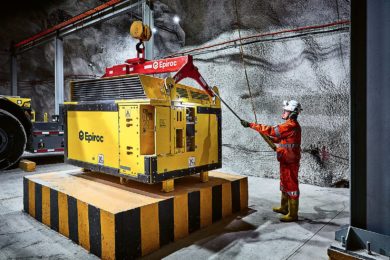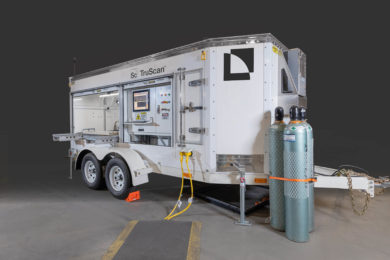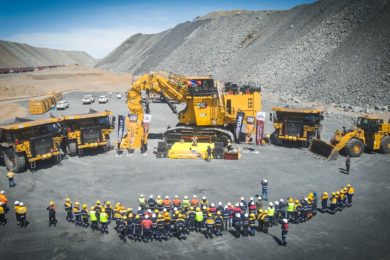Grupo Peñoles opened one of its flagship zinc mines, Fantasma, in Velardeña in northern Mexico’s Durango state in 2013. Today, the mine is also home to one of the global mining industry’s foremost technologies in the form of a battery-driven electric loader, the Epiroc Scooptram ST14 SG, formerly known as the Scooptram ST14 Battery.
The loader was introduced at the Velardeña mine in the spring of 2022, and has been well received by Peñoles employees, and not least the operators, who Epiroc says appreciate the new technology providing a cleaner, cooler, quieter and more efficient experience to their day-to-day operations, which are often performed under challenging conditions.
“We believe that the use of batteries, instead of diesel, is the future of mining,” said Luis Humberto Vazquez, the Director of Mines at Peñoles and one of the company’s highest ranking executives. “We are convinced that the use of batteries will continue to evolve to make the industry more efficient and better optimise operations while reducing our environmental impact.”
“I’m not exposed to as much noise or as many toxic gases as I am when operating a diesel-fuelled truck,” Eduardo García Vaquera, a Peñoles operator, said of Scooptram ST14 SG. “It makes for a much more comfortable and clean work experience with far less heat and no emissions of toxic gases.”
Grupo Peñoles – the world’s biggest silver producer and one of Mexico’s most emblematic and storied institutions – and its sister company Fresnillo “always seek to be at the forefront of changes in the industry,” said Vazquez. He has more than 40 years of experience as a miner, and says that both he and Peñoles understand the challenges of the mining industry and are always looking to improve worker security and health and reduce the hefty ventilation costs associated with the liberation of trapped diesel fumes.
Thus, implementing a Scooptram ST14 SG, which is the first battery-driven electric loader of its kind to be implemented in mining operations in Latin America (with a unit also running at Codelco’s El Teniente in Chile) was an easy decision at Velardeña, where Peñoles employs around 1,350 people – about half the population of the village – and produces 9 t of zinc on a daily basis.
To date, maintenance workers and operators of the Scooptram ST14 SG, a 14 t capacity underground loader that is an impressive 11 m long, say that Scooptram ST14 SG provides an easier and smoother driving experience and the elevated cab is comfortable, roomy and provides much better visibility, particularly when taking sharp turns in narrow and dark mine caverns.
“If I had to choose between one or the other, I’d choose the battery loader one hundred percent of the time,” said Vaquera, who has been a Scooptram operator for three years. “When driving a diesel loader, you experience a lot of vibration, but with a battery-driven electric loader, you feel nothing.”
Vaquera and José Rivero, Peñoles’s Maintenance Planning Advisor at the Velardeña mine, also agree that changing a battery on Scooptram ST14 SG – instead of having to refill a tank with diesel – has brought immediate improvements to efficiency and the speed of operations within the mine.
In the cavern designated for Scooptram ST14 SG, there is a wide parking slip for the loader in the center of the chamber. This slip is flanked on each side of the cave by two yellow-and-black striped platforms custom-fitted for the loader’s batteries. Beyond each platform are two Kempower electric charging stations and an overhead crane system that stretches the width of the chamber and is used to transport the batteries.
When it is time to replace a battery, the red overhead Epiroc crane is operated by remote control, clamping the compact yellow-and-grey ST14 battery, which is about 2.5 m wide, and transporting it from the loader to the platform. The process takes just minutes, and Rivero, who has worked for Peñoles for 33 years, says the battery has streamlined their daily work at the mine. “It’s improved security, productivity and reliability and reduced our costs,” Rivero said, adding that each of the two Epiroc batteries offers a charge of more than four hours. “There is a lot less noise and far fewer defects compared to a diesel loader and, in my role, the electric battery requires far less maintenance and upkeep.”
This is an edited version of an Epiroc customer story on this project which was recently published – see the full version here










